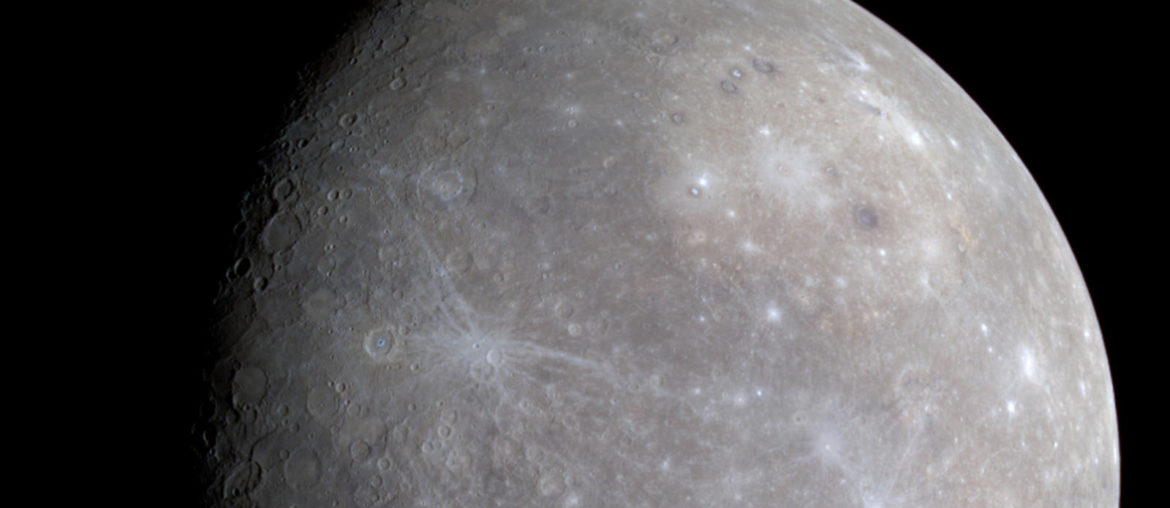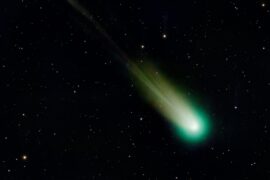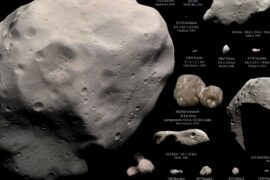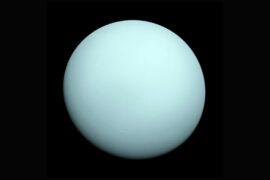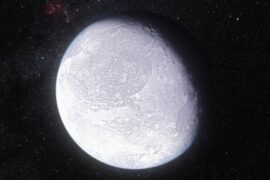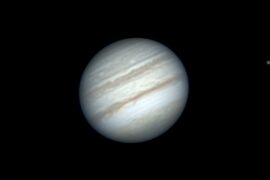Introduction
Mercury is the first planet in our Solar System and one of the closest planets to Earth. Thanks to this, we have known about its existence since ancient times and we have studied and learned a lot about it.
It is one of the most interesting planets because it has helped us understand a lot about the creation of our own Solar System and how other star systems could be formed as well. Mercury is very interesting to study and is full of cool facts.
Mercury Fact Sheet

| Size | 0.38 Earths |
| Diameter | 4880 kilometers |
| Mass | 3.3011 × 1023 kg (0.055 Earths) |
| Aphelion (Point farthest away from the Sun) | 0.466 Astronomical Units (1 AU = distance from Earth to the Sun) |
| Perihelion (Point closest to the Sun) | 0.3 Astronomical Units |
| Gravity | 0.38 times Earth’s gravity |
| Orbital Period (1 Mercurial Year) | 88 Earth days |
| Rotational Period (1 Mercurial Day) | 58.7 Earth days |
| Surface Temperature | 100 K to 700 K (−173 °C to 427 °C) |
| Atmosphere’s composition | 42% oxygen 29.0% sodium 22.0% hydrogen 6.0% helium 0.5% potassium Small amounts of other elements |
Cool Mercury Facts
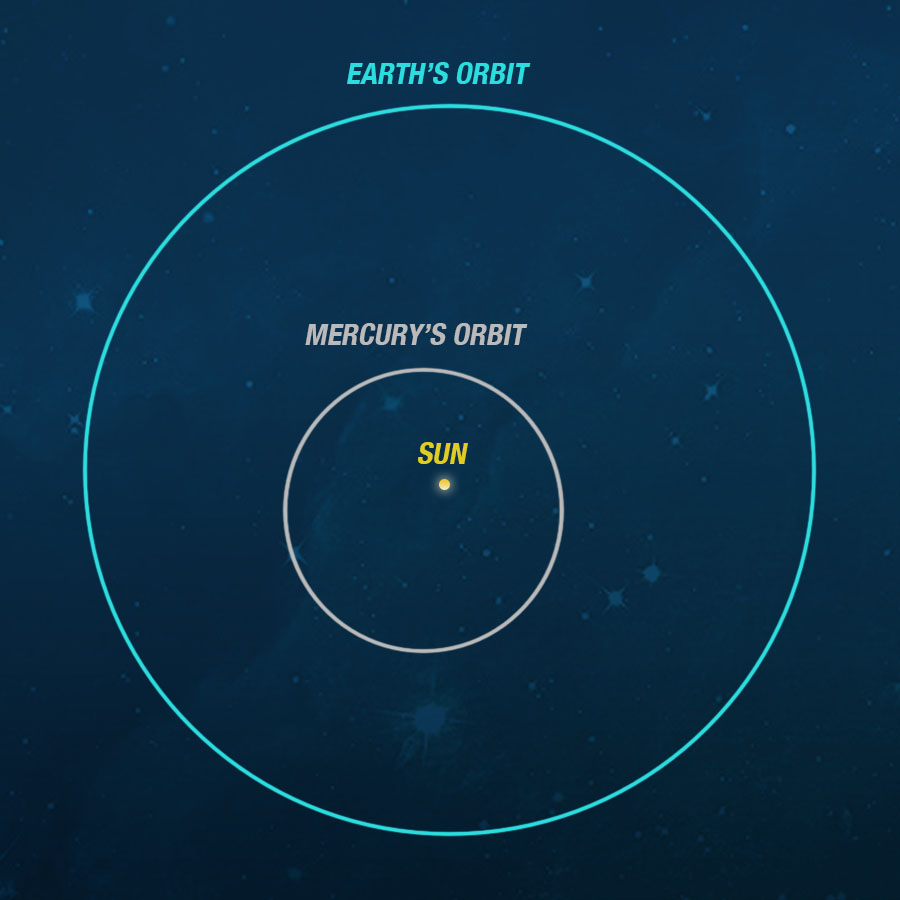
Mercury is the closest planet to the Sun
At a distance of only about 1/3 of Earth’s distance to Sun, Mercury is the first planet in our Solar System.
Mercury is also the smallest planet in the Solar System
With a diameter of only 4880 kilometers (3032 miles) Mercury is the smallest planet in the Solar System. It is barely bigger than our Moon.
Not only is Mercury the smallest planet, it is also shrinking!
In a very, very slow process, Mercury is getting smaller every day. It is estimated that the planet is about 9 miles smaller than it was four billion years ago (we told you it was a slow process). Astronomers believe this is happening because it’s iron core is cooling, which is making it solid, therefore reducing the planet’s volume.
Mercury has the most craters in the Solar System
Because Mercury’s atmosphere is so weak, the planet has nothing to protect it against meteor impacts. This has filled its surface of crater impacts and has given Mercury a very similar look to our Moon.
The biggest crater in Mercury could fit Western Europe
The Caloris Basin in Mercury is a huge crater left by a meteor impact that happened about 3.8 billion years ago. The crater is about 1,550 km (963 miles) in diameter, which would be enough to fit part of Europe from Portugal to Germany. Astronomers estimate the object that caused it was at least 100 km (62 miles) long.
Mercury orbits the Sun faster than any other planet
The planet’s closeness to the Sun makes Mercury’s orbit shorter than those of any other planet in the Solar System. One year in Mercury is only about 88 Earth days. That is less than three months.
Mercury was named after the Roman god of commerce
Because Mercury’s orbit is so small, it seems like it’s moving faster in the sky than other planets. This is why the Romans named it after their fasted god, Mercury, who is sometimes also depicted as a quick messenger with a winged helmet. Mercury was also the god of commerce, finance, communication, and eloquence.
Mercury has some extreme temperature changes
Also because of its weak atmosphere, Mercury can’t contain any of the heat coming from the Sun, so it goes through some wild temperature changes. By day the surface temperature can reach 800 °F (427 °C) but at night it can drop down to -269 °F (−173 °C).
The days are very long in Mercury
Mercury rotates very slowly around its axis. One Mercurial day takes almost 59 Earth days. I don’t know about you but I would be angry if I had to wait almost two months to go to bed.
There is a piece of Mercury here on Earth
In 2012 a green meteorite was found being sold at a street market Morocco. After studying its composition, astronomers believe it might have come from Mercury as it matches the data we have of Mercury sent by the MESSENGER probe. The meteorite could have arrived after one of the many impacts on Mercury sent some pieces of it flying into space.
Mercury goes through phases just like the Moon
Because of its position inside our own orbit, Mercury also goes through phases where only a part of it reflects the Sun’s light. The only other planet that does this is Venus.
Mercury doesn’t have any moons
Due to its small size, low gravity and closeness to the Sun, Mercury isn’t able to keep a Moon in place. The only other planet in the Solar System without moons is Venus.
Only two spacecrafts have been sent to study Mercury
Putting a probe in Mercury’s orbit is a really difficult task as the Sun’s gravity is too strong. Precise, fast changes in speed would be required. Because of this, we have only two probes to study the planet, The Mariner 10 in 1973 and the MESSENGER in 2004. Mariner 10 slingshotted around Mercury to study it, while MESSENGER entered orbit for four years. Both have now been shut down. It is believed the Mariner 10 could be orbiting the Sun, but it is out of fuel and powered down.

History and Mythology
Mercury doesn’t have an official discoverer as it is one of the planets that can be seen from Earth with the naked eye. Because of this, ancient civilizations already knew about its existence.
Our current name for Mercury comes from Roman mythology after the god of commerce and communication. Roman astronomers, in turn, took the name from Mercury’s Greek equivalent, Hermes, the messenger of the gods. Greeks named the planet after Hermes because it was the planet that moved the fastest. In modern Greece, they still refer to it with a variation of the name, they call it Ermis
Other civilizations used different names for Mercury or associated it with different gods.
- Germanic religions associated Mercury with the god Odin
- In Hindu mythology, they called it Budha.
- Mayans depicted Mercury as four owls and referred to it as the messenger to the underworld
- In Asian cultures, they refer to Mercury as the water star.
What we do know is that in the modern era, the first person to see Mercury with a telescope was the Italian astronomer Galileo Galilei.
Frequently Asked Questions About Mercury
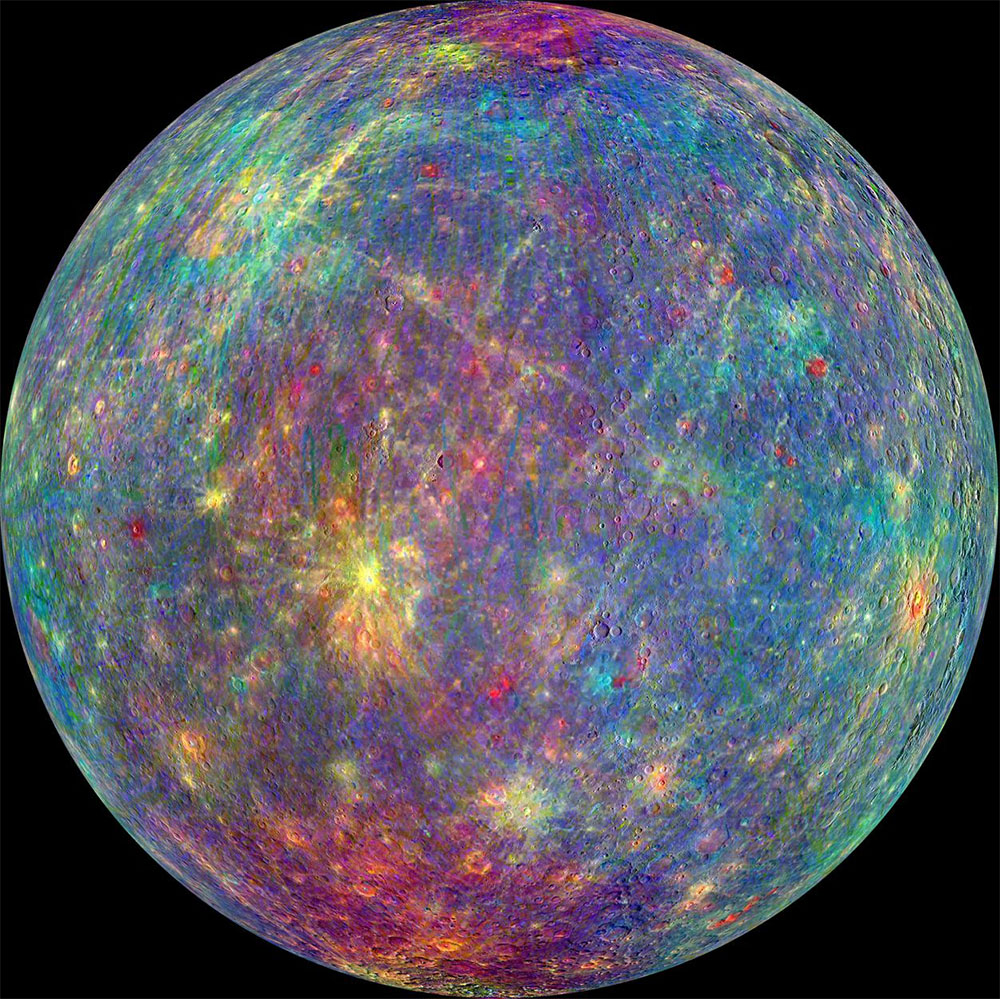
Does Mercury have any moons?
No. Mercury is one of the two only planets in the Solar Systems that don’t have any moons. The other is Venus. Astronomers believe this is because it is too small and therefore has weak gravity so it can’t hold on to a moon. Its closeness to the Sun can be the other factor.
Have humans ever traveled to Mercury?
No. Only a couple unmanned probes have been sent to study the planet. Mercury is so close to the Sun that it has one of the harshest environments for us humans. A manned mission to Mercury is not likely to happen any time soon.
What is Mercury made of?
Mercury is one of the four terrestrial planets in the Solar System. This means it has a rocky, solid composition. Astronomers estimate it is made out of 70% various metallic materials and 30% silicates and its core is mostly iron.
Does Mercury have water?
Yes. The MESSENGER probe confirmed there are some small deposits of ice in some of Mercury’s craters that are always shaded from the Sun. Liquid water is unlikely though.
Does Mercury have life?
Not likely. Mercury’s atmosphere is too thin and its temperature conditions are too extreme to sustain life. Scientists do not believe there is life on Mercury or that there has ever been.
Does Mercury have volcanoes?
Yes and no. While Mercury does have volcanoes, they are no longer active. Astronomers believe at some point they were very active and shaped the planet’s geology.
Does Mercury have any rings?
No. Mercury doesn’t have any rings. Probably for the same reasons it doesn’t have any moons (low gravity, too close to the Sun).
How many craters does Mercury have?
At the time, NASA has identified and classified 763 carters on Mercury’s surface. 397 of these have received names and most of them are named after writer, poets, painters and other artists. You can find a complete list of the named craters here. The biggest one is the Caloris Basin, with a diameter of 1,550 kilometers (963 miles).
Who discovered Mercury?
We don’t know. Mercury can be seen from Earth without help from telescopes so ancient civilization already knew about it, so the discovery can’t be attributed to one single person.
Is Mercury the hottest planet in the Solar System?
No. Because it is the planet closest to the Sun, it would be easy to think it is also the hottest planet, but that is incorrect. Mercury has a very weak atmosphere so it can’t hold any heat. Venus is the hottest planet in the Solar System because it is close to the Sun and it does have an atmosphere that traps the heat.
Enjoyed this article?
Get daily 10-minute PDFs about astronomy to read before bed!
Sign up for our upcoming micro-learning service where you will learn something new about space and beyond every day while winding down.

